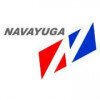
i
B.L. Kashyap &
Sons
Filter interviews by
B.L. Kashyap & Sons Interview Questions and Answers
38 Interview questions
Determining ring cutting length involves measuring the circumference and adjusting for material thickness.
Measure the diameter of the ring to find the circumference using the formula: Circumference = π × Diameter.
Consider the thickness of the material when calculating the cutting length to ensure proper fit.
For example, if the diameter is 10 cm, the circumference is approximately 31.4 cm (using π ≈ 3.14).
Adjust th...
Rolling margin refers to the permissible variation in the dimensions of rolled steel sections as per IS codes.
Rolling margin is defined in IS 2062 for structural steel.
It accounts for variations in weight and dimensions during manufacturing.
For example, a rolling margin of ±5% is common for steel sections.
It ensures that the actual weight of steel is within acceptable limits for structural integrity.
Rolling margin...
Rolling margin refers to the variation in billing amounts over time, aiding in accurate financial reconciliation.
Rolling margin helps track changes in billing amounts over a specified period, ensuring accuracy.
For example, if a project has fluctuating costs, rolling margin allows for adjustments in future invoices.
It aids in identifying discrepancies between billed amounts and actual costs, facilitating better fin...
Secured advance is a financial arrangement where funds are provided against collateral, typically claimed during project milestones.
Secured advance is often used in construction contracts to provide upfront funding against future work.
It is claimed when a contractor needs cash flow support before completing specific project milestones.
For example, a contractor may claim a secured advance of 10% of the contract val...
Cement is a binding material used in construction to hold together bricks, stones, and other materials.
Cement is a fine powder made from a mixture of limestone, clay, and iron ore.
When mixed with water, cement forms a paste that hardens and binds materials together.
There are different types of cement such as Portland cement, white cement, and rapid-hardening cement.
Compaction test measures soil density and moisture content to ensure stability in construction projects.
Determines the optimal moisture content for soil compaction.
Common methods include Standard Proctor and Modified Proctor tests.
Used to assess the suitability of soil for construction.
Example: A Standard Proctor test involves compacting soil in a mold and measuring the density.
Admixtures are substances added to concrete to enhance its properties and performance in construction.
Improve workability: Admixtures like plasticizers make concrete easier to mix and pour.
Control setting time: Retarders slow down the curing process, useful in hot weather.
Enhance durability: Water-reducing admixtures increase strength and reduce permeability.
Air entrainment: Introduces tiny air bubbles to improve ...
Standard deviation is a measure of the dispersion or spread of a set of data points from the mean.
Standard deviation is calculated by taking the square root of the variance.
It indicates how much the data points deviate from the mean.
A higher standard deviation means the data points are more spread out, while a lower standard deviation means they are closer to the mean.
For example, in a set of test scores, a high s...
Accounting is the process of recording, summarizing, analyzing, and reporting financial transactions of a business.
Involves recording financial transactions
Summarizing financial data in financial statements
Analyzing financial information to make business decisions
Reporting financial results to stakeholders
Examples: preparing balance sheets, income statements, cash flow statements
Concrete grade directly affects the development length of reinforcement bars in a structure.
Higher concrete grades typically require longer development lengths for reinforcement bars to achieve the desired bond strength.
Lower concrete grades may allow for shorter development lengths, but may compromise the overall strength and durability of the structure.
Development length is influenced by factors such as bar diam...
B.L. Kashyap & Sons Interview Experiences
55 interviews found
I appeared for an interview in Jun 2025, where I was asked the following questions.
- Q1. Civil engineer kya hai
- Q2. Survey kya hota hai
- Q3. What's civil engineer
Interview Preparation Tips
I appeared for an interview in Jan 2025.
(2 Questions)
- Q1. Labour rate of shuttering
- Ans.
Labour rate of shuttering refers to the cost of labor required for constructing formwork for concrete structures.
Labour rate of shuttering is typically calculated per square foot or square meter of formwork used.
The rate can vary depending on the complexity of the formwork design and the skill level of the laborers.
For example, the labour rate for simple wooden formwork may be lower than the rate for complex steel form...
- Q2. Productivity of shuttering and Reinforcement
- Ans.
Productivity of shuttering and reinforcement is crucial for efficient construction operations.
Productivity of shuttering can be improved by using prefabricated formwork systems
Efficient scheduling and coordination of reinforcement work can increase productivity
Regular maintenance of equipment and tools used for shuttering and reinforcement is essential
Training and upskilling of workers can also enhance productivity in ...
(1 Question)
- Q1. Regarding CTC discussion
Interview Preparation Tips
(1 Question)
- Q1. Only details ..like qualification, previous experience, current salary , expected salary
(1 Question)
- Q1. About your experience and related field ..like of you are billing engineer,is 1200 related questions.deduction etc .bill procedure .Known Software
(1 Question)
- Q1. To clear weather you are selected or not .if selected then discuss about the salary and joining date .and documentation.
I applied via Naukri.com and was interviewed in Aug 2024. There was 1 interview round.
(5 Questions)
- Q1. Multiple questions in the civil execution.
- Q2. Process the construction work like :- shuttering, steel, concrete and finishing work.
- Q3. Knowledge of BBS
- Q4. Knowledge of mivan shuttering
- Q5. Knowledge of water proofing work
Interview Preparation Tips
- Building Construction
I appeared for an interview in May 2025, where I was asked the following questions.
- Q1. Item rates of block work
- Ans.
Item rates for block work involve calculating costs based on materials, labor, and overhead for masonry projects.
Item rates typically include costs for materials like blocks, mortar, and reinforcement.
Labor costs are calculated based on the time required for block laying, including skilled and unskilled labor.
Overhead costs may include equipment rental, site management, and indirect costs.
For example, if 1000 blocks ar...
- Q2. Rate of shuttering
- Ans.
Rate of shuttering refers to the speed and efficiency of formwork installation and removal in construction projects.
Shuttering rate impacts project timelines; faster rates can lead to quicker project completion.
Example: In high-rise buildings, efficient shuttering can reduce overall construction time by weeks.
Factors affecting shuttering rate include crew experience, equipment used, and complexity of the design.
Regular...
- Q3. Rates of concrete
- Ans.
Concrete rates vary based on mix design, location, and project scale, impacting overall construction costs.
Concrete prices typically range from $100 to $150 per cubic yard, depending on the mix.
Specialty mixes, like high-strength or decorative concrete, can cost significantly more.
Location affects rates; urban areas may have higher transportation costs.
Bulk purchases often lead to discounts, reducing overall project ex...
Interview Preparation Tips
I applied via Naukri.com and was interviewed in Jul 2024. There was 1 interview round.
(5 Questions)
- Q1. Rolling Margin of Steel
- Q2. Thickness of plaster for different surface
- Q3. Dimension tolerance of brick
- Q4. Cement testing IS code
- Q5. AAC block grade
Interview Preparation Tips
- Concrete and steel
I appeared for an interview in Apr 2025, where I was asked the following questions.
- Q1. Civil structure
- Q2. Civil highways
- Q3. Civil estimate &costing
- Q4. Material &lab equipment
- Q5. Construction Management
- Q6. Quality assurance
- Q7. Labour management
- Q8. Contractor management
- Q9. Steel of design
- Q10. Drawing development
- Q11. Rcc &cc work
- Q12. Brick Massonary
I appeared for an interview in Apr 2025, where I was asked the following questions.
- Q1. Quality related questions
- Q2. Site experience
I applied via Company Website and was interviewed in Mar 2024. There were 9 interview rounds.
(4 Questions)
- Q1. This is information to company
- Q2. This is company sites through
- Q3. This company is highly growth
- Q4. This is responsible for the employee
(2 Questions)
- Q1. Bar bending shedule in this question
- Q2. What are you quality control
- Ans.
Quality control is a process used to ensure that products or services meet specified requirements and standards.
Quality control involves inspecting, testing, and evaluating products or services to ensure they meet quality standards.
It also includes identifying defects or deviations from specifications and taking corrective actions.
Quality control helps to prevent defects, improve processes, and enhance customer satisfa...
This is company at the high economy
Number system and latter
On basis of defined structure
(1 Question)
- Q1. The information to company
This check the soil testing
This is growth process in the employee
(1 Question)
- Q1. I like this with company
Interview Preparation Tips
(1 Question)
- Q1. What is Standard Deviation?
- Ans.
Standard deviation is a measure of the dispersion or spread of a set of data points from the mean.
Standard deviation is calculated by taking the square root of the variance.
It indicates how much the data points deviate from the mean.
A higher standard deviation means the data points are more spread out, while a lower standard deviation means they are closer to the mean.
For example, in a set of test scores, a high standa...
Top trending discussions






B.L. Kashyap & Sons Interview FAQs
The duration of B.L. Kashyap & Sons interview process can vary, but typically it takes about less than 2 weeks to complete.
Tell us how to improve this page.
B.L. Kashyap & Sons Interviews By Designations
- B.L. Kashyap & Sons Civil Site Engineer Interview Questions
- B.L. Kashyap & Sons Planning Engineer Interview Questions
- B.L. Kashyap & Sons Assistant Project Manager Interview Questions
- B.L. Kashyap & Sons Accountant Interview Questions
- B.L. Kashyap & Sons General Manager Project Interview Questions
- B.L. Kashyap & Sons Site Engineer Interview Questions
- B.L. Kashyap & Sons Junior Engineer Interview Questions
- B.L. Kashyap & Sons Senior Engineer Interview Questions
- Show more
Interview Questions for Popular Designations
Overall Interview Experience Rating
based on 63 interview experiences
Difficulty level
Duration
Interview Questions from Similar Companies
B.L. Kashyap & Sons Reviews and Ratings
based on 542 reviews
Rating in categories
|
Site Engineer
103
salaries
| ₹2.1 L/yr - ₹6 L/yr |
|
Senior Engineer
90
salaries
| ₹4.3 L/yr - ₹8.1 L/yr |
|
Civil Site Engineer
80
salaries
| ₹2.4 L/yr - ₹6 L/yr |
|
Junior Engineer
45
salaries
| ₹2.5 L/yr - ₹5 L/yr |
|
Assistant Engineer
33
salaries
| ₹2.7 L/yr - ₹5.2 L/yr |

Nasser S. Al Hajri Corporation

Navayuga Engineering Company

L & W Constructions

S P Singla Constructions
- Home >
- Interviews >
- B.L. Kashyap & Sons Interview Questions












